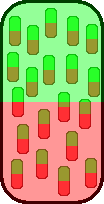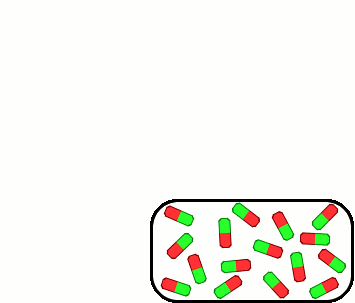Model of elementary magnets |
Click here to stop the animation. Move your cursor over the according picture to reactivate it. |
Elementary magnets
 The magnetic effects of some materials can be explained by so called elementary magnets. In this model, magnets consist of innumerable extremely small elementary magnets. These “mini-magnets“ can point in any direction.
The magnetic effects of some materials can be explained by so called elementary magnets. In this model, magnets consist of innumerable extremely small elementary magnets. These “mini-magnets“ can point in any direction.
If they face the same direction, the whole object acquires this polarity and becomes a magnet. If they point in many different directions, however, no magnetic effects can be perceived on the outside.
Accordingly, elementary magnets make up the smallest magnetic entity. But this is only a model. In reality, these tiny magnets do not exist in this form. However, their effects, which can be attributed to the behaviour of single atoms, are observable.

Ferromagnetism: Magnetisability
This model can also explain why iron can be magnetized. Imagine that iron consists of elementary magnets. But they are oriented irregularly and point to numerous different directions. As long as an outer magnetic field works on the iron, the elementary magnets face one direction. With a structured alignment of its elementary magnets, the piece of iron itself becomes magnetic. When the magnet is removed, this alignment is lost over time. Certain procedures, however, can magnetise iron lastingly.
Demagnetisation
The magnetisation of a magnet or a piece of iron can be undone. For this, the structured alignment of the elementary magnets has to be destroyed. This can happen in many ways. Some - „weak“ - magnets over time lose their orientation on their own, so that the magnetic effects stop. But through intense shocks or significant heat exposure, even „strong“ magnets can be demagnetised, because the elementary magnets lose their common allignments.
